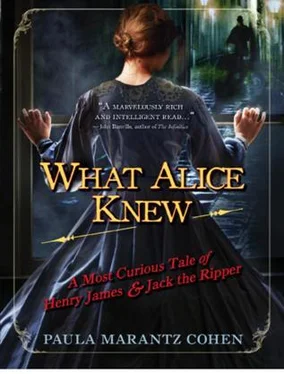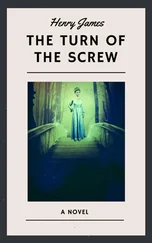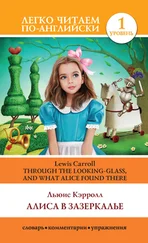After Mrs. Smith left the room, Henry took a cloth from the kitchen and wiped up the puddle from her umbrella. He then went to his desk, glanced down at the sentence he had written, crumpled the paper, and threw it in the basket near his chair. Why should he write about something like that? He had been instigated to do so because William was being so smug about working for Scotland Yard. And there was the lady at Gosse’s (was it Gosse’s?) who had encouraged him. His mind veered off. The ghastly events of that night remained cloudy in his memory. It was fortunate that his consciousness had been muted by drink (the irony of this was not lost on him), and that he was free of any vivid recollection of pain or fear that might have derailed his social relations or, worse, his work.
Yet something from that night nagged persistently at his memory. It was not the attack itself but something that had occurred earlier. He closed his eyes, trying to remember, but all he could summon up was a blur of faces around a table. If there was a germ there—the kind of hint that so often sparked his stories—he could not recall what it was.
No, he would not write about murder, but he would take an interest in the case and help where he could. The observations of Mrs. Smith had left an odd resonance. He felt a vague kinship with the murderer—he had felt this before, but when?—a sense that the impulses that drove this deranged creature to kill were not so very different from those that drove him to write. He had learned early on how to transform frustration into a fantasy of fulfillment, to turn life into art. To catch Jack the Ripper, he understood, was to effect a reverse transformation, to uncover the frustrated desires that found their perverse fulfillment in murder.
William and Abberline were seated in a small cubicle in Scotland Yard, where they had repaired following the viewing of Catherine Eddowes’s corpse. It had been Abberline’s idea to review the photographs of the other victims in the hope that William might see something of value that had been missed by the police. The inspector had become convinced that the key to solving the case lay not in material evidence but in something more ineffable—what was called, in certain circles, “the psychological aspect.” It had been his idea to consult William, a suggestion agreed to by Sir Charles, a man always willing to be accommodating so long as he did not have to do any work himself.
Abberline took a folder from the cabinet and opened it on the table where he and William were seated. The folder contained photographs of the Whitechapel victims. There were two photographs included for each of the four murders: one of the victim found at the scene and one of the victim on a slab in the London morgue.
The first set of photographs was of Martha Tabram, killed August 7. In the one taken at the scene, the woman was sprawled on the ground, so drenched in blood it was impossible to tell where she had been stabbed. In the second photograph, one could see clearly the crazy quilt of jagged slices to her abdomen.
“I’d like to eliminate this case from our investigation,” said Abberline, pointing to the second photograph by way of explanation. “The stab wounds to the stomach are not symmetrical, as in the subsequent cases, and the weapon used appears to be a bayonet rather than a knife, which produces neater incisions. Finally, the throat wasn’t cut, which appears to be the cause of death in all the other cases.” He jabbed his finger at Tabram’s neck with a certain violence, which indeed showed no mark, though the face itself was contorted in a terrible grimace. William looked away for a moment as Abberline continued. “There’s a determination to see Tabram as the first Ripper murder, perhaps to ratchet up the number of his crimes, perhaps to alleviate the need to seek out another killer. It’s an ongoing problem. The public, and many in authority as well, try to press into service acts of violence that are clearly the work of other hands. Pin it on this Ripper fellow and be done with it.” He snorted contemptuously, as though familiar with the rationalizations and dodges of his colleagues.
William felt compelled to add another perspective. “It’s human nature to want to find pattern,” he noted. “Once we begin to think there is one, we are likely to see it reinforced. It’s the drive to create order out of chaos.”
Abberline, disinclined to this more forgiving view, had moved on to the photographs of Mary Ann Nichols, known as Polly, murdered August 31. He pointed to the relevant points in the morgue shot, speaking with authoritative coolness (William imagined Abberline had gone over these photographs many times already and had become numb to their horror). “Throat cut in simple execution style, symmetrical wounds to the stomach, opening of the abdominal cavity and exposure of the viscera.”
He flipped to the third set of photographs of Annie Chapman, killed on September 8. “Throat cut. Symmetrical abdominal cutting. Exposure of viscera. Uterus removed.” He paused to editorialize. “Our killer is becoming more ingenious…and more invasive. But the pattern, as you see, remains similar to the Nichols case.”
He moved on. “Elizabeth Stride, killed in the early morning of September 30. Throat cut. That’s all.” He gave a dry laugh, as though struck by the irony of referring in such a way to a cut throat. “It might not seem to fit the pattern,” he continued, “since there are no other mutilations, but it’s clear that the murderer was interrupted in his work. Note the state and disposition of the body.” He turned to the photograph taken in the morgue and pointed to where the victim’s dress was ripped but not torn off the body, and then shifted to the photograph at the scene, where the body was shown slumped, face forward, suggesting it had been pushed down in haste. “What also supports this hypothesis, of course, is that the Eddowes’s murder occurred less than an hour and a half later. Frustration at the earlier interruption would also account for the level of brutality here.” He displayed the photograph of Eddowes on a slab in the morgue, which had been taken before the stitching up of the wounds. The head was twisted to the side, almost severed from the trunk; great flaps of skin were exposed on the face; and the abdomen was a thicket of standing flesh. The killer had carved up that area of the body with frenzied completeness.
Abberline droned out the details. “Throat cut, extreme and symmetrical cutting of the abdomen and the face, uterus and kidney taken away, left ear partially severed—something new there, suggesting that our murderer may have in mind additional variations to come.” He had spoken without emotion, but a sigh escaped him at the prospect of what those variations might be. He quickly resumed his professional tone and moved on to conclude, “There are marked similarities in the pattern of cutting in Nichols, Chapman, Stride, and Eddowes, not to mention affinities in their age and occupation. They were all in their late thirties and early forties, all prostitutes. All were in dire physical condition, not necessarily underfed, but unhealthy. Our man likes to prey on weakness.”
“Did the murderer commit on them acts of a…sexual nature?” asked William carefully. He was prone to prudery, despite his medical training, and had noted that his European colleagues were less tentative on this score.
Indeed, Abberline responded bluntly, “No. The women were found in suggestive positions, legs exposed and spread, but there was no indication of sexual intercourse, neither in vaginal tearing nor in the presence of the expected fluids.”
“What you describe seems to suggest a desire to possess and penetrate these women, but apparently not in the sexual sense.”
Читать дальше












